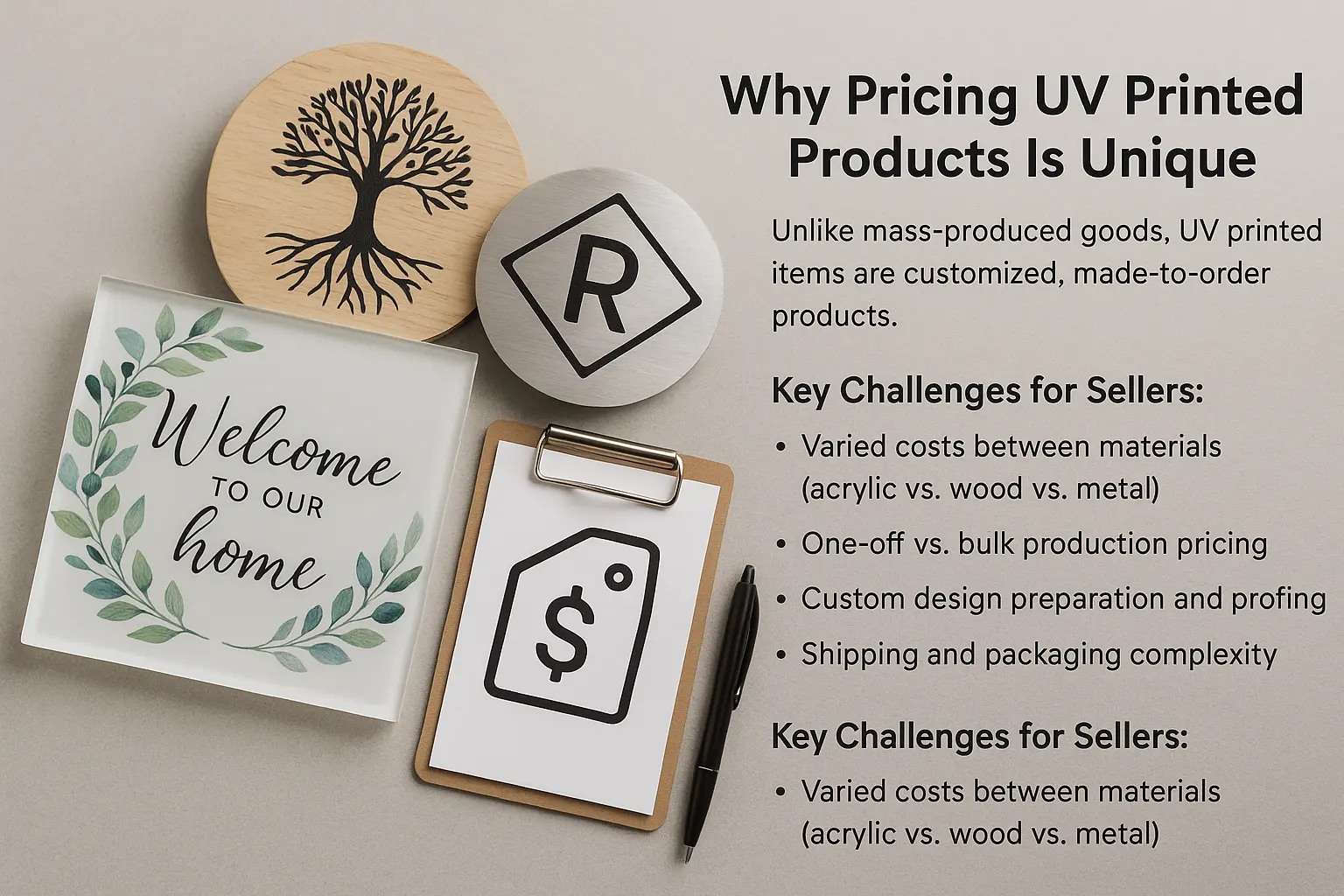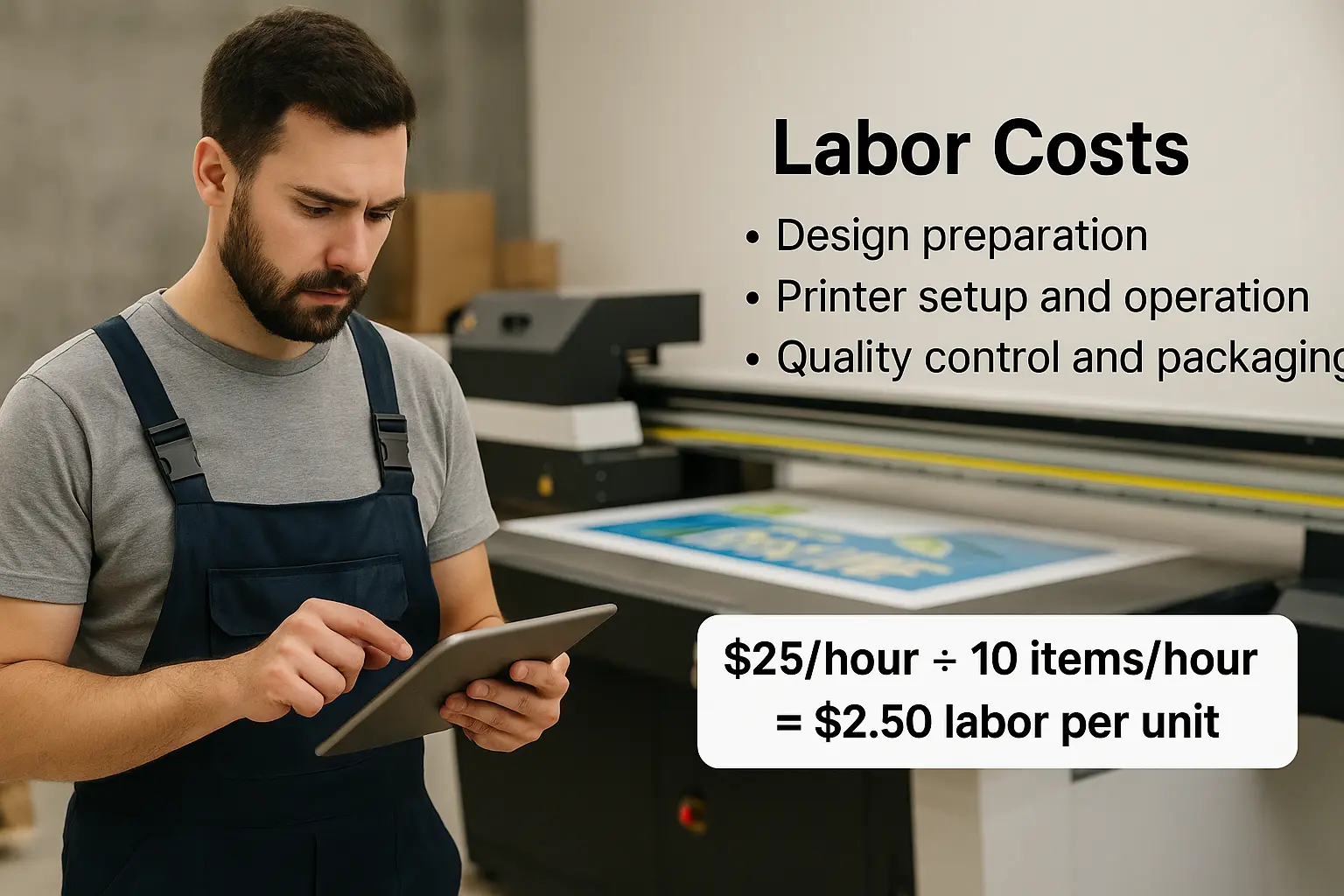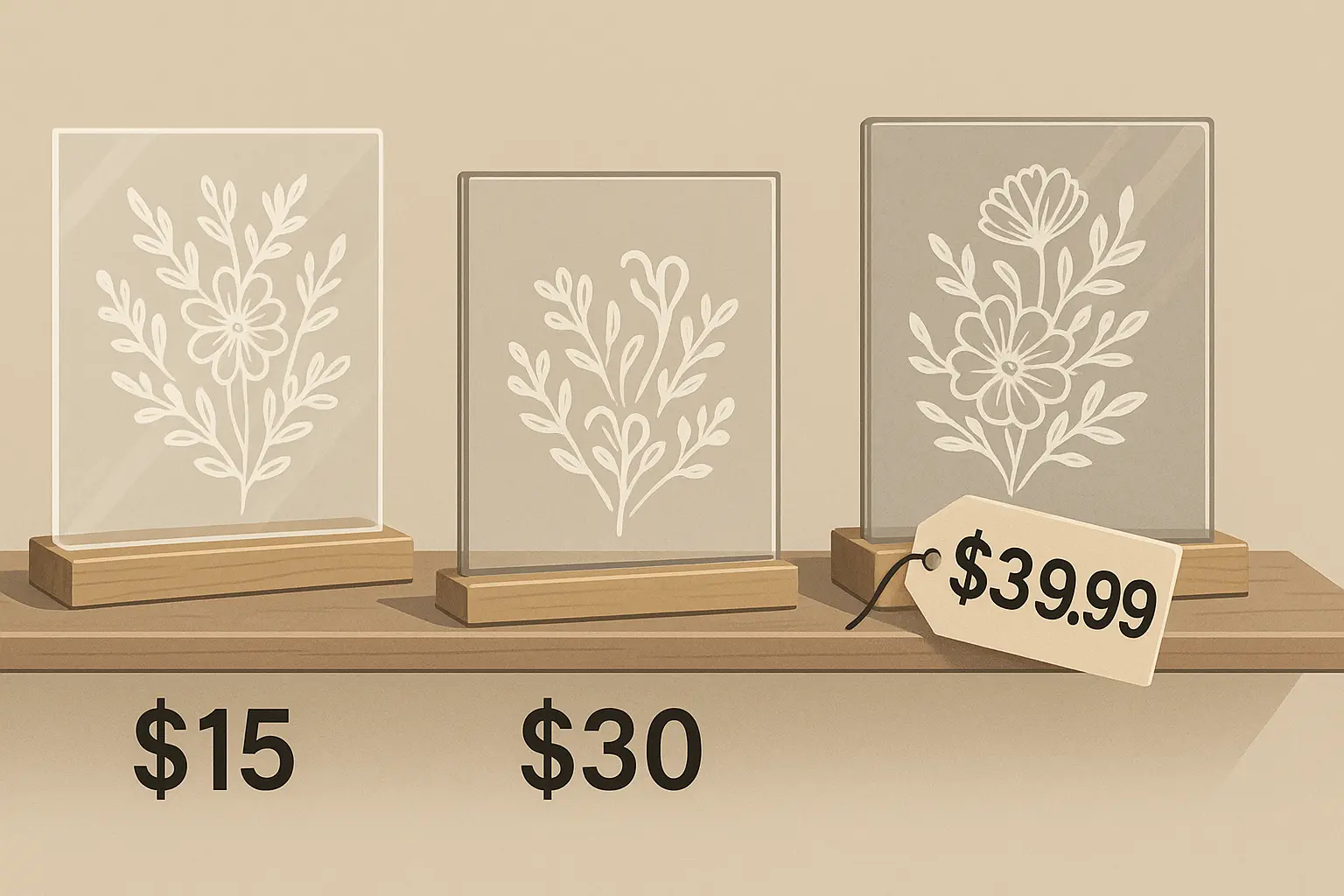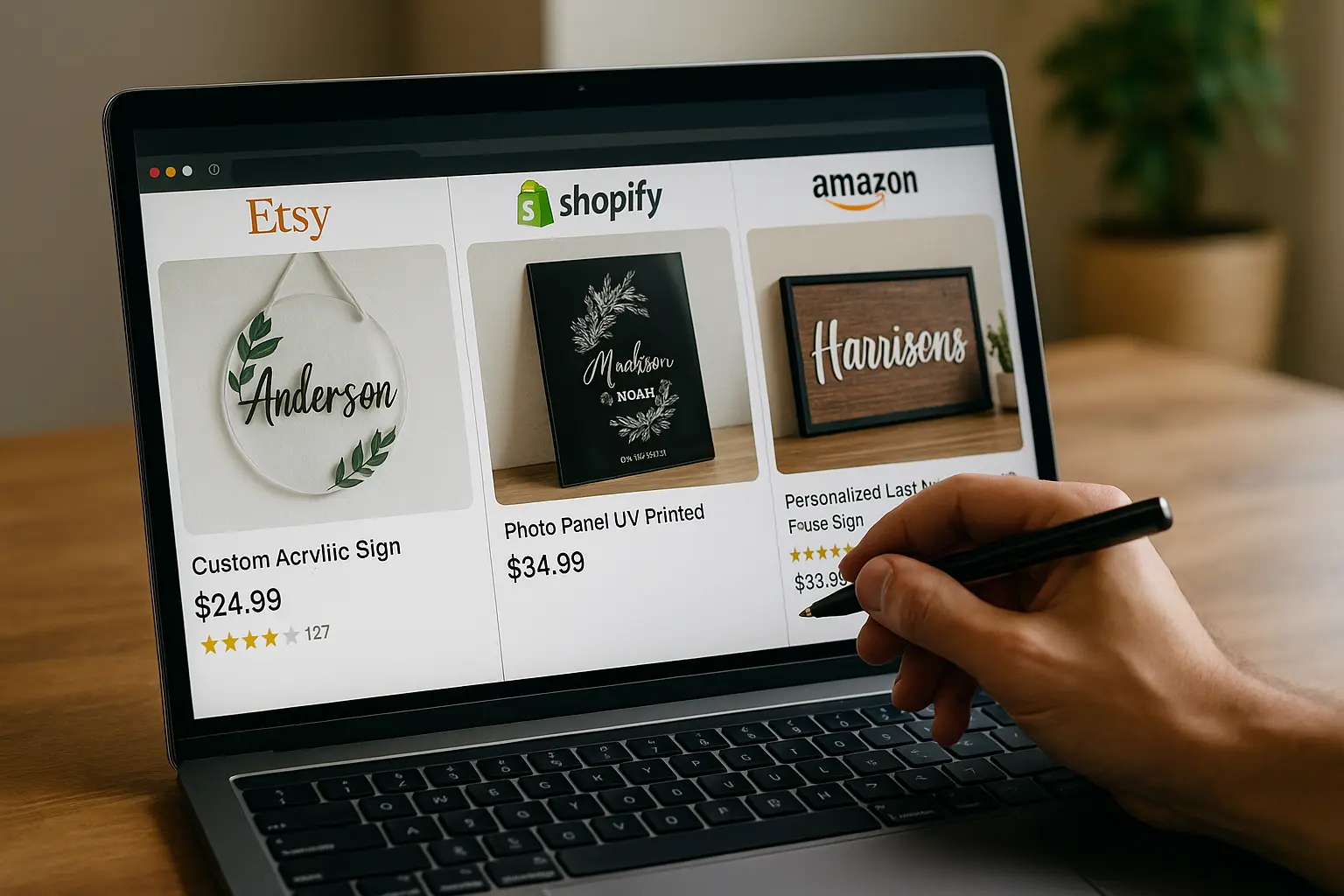Pricing can make or break an online business.
Set prices too low, and you undercut your profit margins.
Set them too high, and customers go elsewhere.
For eCommerce sellers offering UV printed products, pricing can be particularly tricky. Custom items vary by material, size, and level of personalization — meaning there’s no simple “one-size-fits-all” formula.
The good news? With the right strategy, you can create a pricing model that attracts customers and maximizes profit.
In this article, we’ll break down the best ways to price UV printed items, how to calculate your true costs, and what factors to consider when building a profitable online product catalog.
Why Pricing UV Printed Products Is Unique
Unlike mass-produced goods, UV printed items are customized, made-to-order products. Each one may involve different materials, design complexity, and printing time.
That means your pricing must account for more than just materials — it must reflect your time, expertise, and brand value.

Key Challenges for Sellers:
- Varied costs between materials (acrylic vs. wood vs. metal)
- One-off vs. bulk production pricing
- Custom design preparation and proofing
- Shipping and packaging complexity
By understanding these variables, you can build a pricing structure that’s both competitive and profitable.
Step 1: Understand Your True Costs
Before you set a price, you need to know what each item really costs you to produce.
1. Material Costs
Include all materials involved: substrates (acrylic, metal, wood, etc.), inks, coatings, adhesives, and any packaging or mounting materials.
EXAMPLE
Acrylic sheet | UV ink cost | Protective film + packaging | Total Material Cost |
$4.50 | $0.80 | $1.00 | $6.30 |
2. Labor Costs
Even if you’re a solo operator, your time has value. Include:

- Design preparation
- Printer setup and operation
- Quality control and packaging
Estimate your hourly rate and divide by the average number of products produced per hour to get your per-item labor cost.
EXAMPLE
$25/hour ÷ 10 items/hour = $2.50 labor per unit
3. Overhead Costs
These are the “invisible” expenses — electricity, software, machine maintenance, web hosting, marketing, and rent (if applicable).
Estimate your total monthly overhead and divide by the number of items produced monthly.
EXAMPLE
$600 overhead ÷ 300 items = $2 per item
4. Shipping and Handling
Don’t forget packaging materials and courier fees. Customers often expect flat-rate or free shipping, so these costs should be baked into your pricing.
Example: Average shipping cost = $4.50 per order
EXAMPLE
Average shipping cost = $4.50 per order
✅ Cost Summary Example
Category | Example Cost per Unit |
Material | $6.30 |
Labor | $2.50 |
Overhead | $2.00 |
Shipping | $4.50 |
Total Cost per Item | $15.30 |
Once you know your base cost, you can apply your markup to ensure a healthy profit margin.
Step 2: Choose the Right Pricing Model
Different pricing models work for different business goals. Let’s explore the three most common approaches for UV printed products.
1. Cost-Plus Pricing (Straightforward & Reliable)
This method adds a fixed markup percentage to your base cost.
FORMULA
Selling Price = Total Cost + (Total Cost × Markup %)
If your UV printed sign costs $15.30 to produce and you want a 60% markup:
$15.30 + (15.30 × 0.6) = $24.48
Pros:
✔ Easy to calculate
✔ Guarantees profit per sale
Cons:
❌ Doesn’t account for market demand or perceived value
2. Value-Based Pricing (For Premium Products)
With this method, pricing reflects what your customers are willing to pay, not just production costs.
UV printing often produces luxury or boutique-quality items, so customers are willing to pay more for perceived quality and uniqueness.

Customers perceive the higher price as a reflection of superior quality and reliability.
Pros:
✔ Maximizes profit potential
✔ Builds brand authority
Cons:
❌ Requires market research and strong product presentation
3. Tiered Pricing (Best for Online Stores)

Offer multiple pricing tiers to serve different customer types:
- Standard: Basic design, flat finish
- Premium: Raised UV or spot gloss
- Deluxe: Custom shapes, packaging, or bulk discount
This approach increases average order value (AOV) and gives customers flexibility.
EXAMPLE
- Standard Acrylic Sign: $24.99
- Premium Gloss Finish: $34.99
- Deluxe Custom Cut + Packaging: $44.99
Step 3: Analyze the Market
Research competitors on Etsy, Shopify, and Amazon.

Identify:
- Price ranges for similar UV printed items
- What differentiates premium listings
- Customer feedback about pricing vs. quality
Don’t just compete on price — compete on design, quality, and presentation.
PRO TIP
Use tools like eRank, Marmalead, or Google Keyword Planner to find pricing and demand trends for specific product categories (e.g., “custom acrylic sign,” “UV printed phone case”).
Step 4: Factor in Perceived Value
Your customers aren’t just paying for the product — they’re paying for craftsmanship, durability, and design impact.
Ways to Increase Perceived Value:
- Professional Photography: Show products in use, not just on white backgrounds.
- Luxury Packaging: Unboxing is part of the experience.
- Limited Editions: Scarcity drives urgency and allows premium pricing.
- Customization Options: Personalization commands higher prices.
- Storytelling: Share your production process to justify premium pricing.
EXAMPLE
Our UV-printed acrylic signs are hand-finished and printed with eco-friendly inks for long-lasting brilliance.”
Step 5: Use Data to Adjust and Optimize
Your first pricing model doesn’t have to be final. Track your metrics and adjust based on performance.

Watch for:
- Conversion rates (visits → sales)
- Abandoned carts (potential price friction)
- Customer reviews (comments about value or cost)
- Repeat purchase rates
If your conversion rate drops below 2%, your price may be too high. If products sell instantly, you may be priced too low.
USE A/B TESTING
Try two price points for the same product and see which performs better.
Step 6: Plan for Volume Discounts and Wholesale
As your store grows, you’ll attract corporate buyers or event planners looking for bulk orders.
UV printing makes it easy to handle these efficiently — and you can offer volume-based pricing without losing profit.
Quantity | Discount | Notes |
1–10 units | 0% | Regular pricing |
11–50 units | 10% | Encourage medium orders |
51–100 units | 15% | Corporate / event scale |
100+ units | Custom Quote | Contact for bulk pricing |
Include a “Request a Quote” form or link for large orders.
Step 7: Communicate Value Clearly
Customers are willing to pay more when they understand why your products cost what they do.

Use your product listings and website copy to highlight:
- Quality materials (e.g., “Premium-grade acrylic, UV cured for durability”)
- Eco-friendly inks
- Custom craftsmanship
- Fast fulfillment
This not only justifies your price but builds brand trust — especially important in the competitive online printing space.
Example
Real-World UV Product Pricing Breakdown
Product | Cost to Produce | Recommended Retail Price | Profit Margin |
Custom Acrylic Sign | $15 | $35 | 57% |
Personalized Keychain | $4 | $12 | 66% |
Branded Packaging Box | $7 | $18 | 61% |
Photo Panel (8x10) | $10 | $25 | 60% |
Corporate Plaque | $18 | $45 | 60% |
These margins provide healthy profits while staying competitive in online marketplaces like Etsy or Shopify.
Step 8: Revisit Pricing Regularly
The cost of materials, shipping, and ink can fluctuate. Review your pricing every 3–6 months to ensure you’re maintaining profitability.
Also, watch for market changes — if demand spikes for a certain product, raise prices slightly to reflect the trend.
Conclusion
Pricing UV printed products isn’t just about covering costs — it’s about understanding value.
By combining clear cost analysis, market research, and perceived value strategies, you can build a pricing model that supports sustainable growth and profitability.
At CutPrintShip, we empower eCommerce brands and small businesses to produce premium-quality UV printed products — efficiently and affordably. Whether you’re just starting out or scaling up, we’ll help you optimize your pricing and production for long-term success.